7 Outdoor Math Games For Your Kids
Outdoor Math Games for Summer Learning (and Math Joy!)
View the interview on WWLP News Channel 22’s Mass Appeal here.
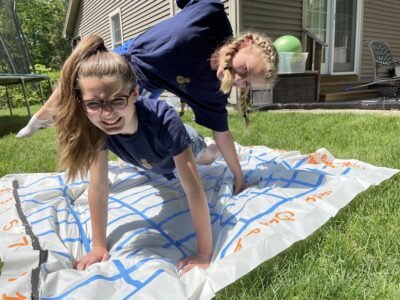
Memorial Day weekend marks the beginning of a time when kids are counting down the last few days of school and caregivers are pondering how to prevent summer slide (and keep their children’s minds engaged in learning while still having fun!). Here are a few recommendations of outdoor math games for the 12 and under crowd, along with downloadable PDFs to guide you in game creation. Best part? Not only are your kids learning and having fun in the sun, but these games are fun to create and use recycled or cheap materials. Kid-friendly, budget-friendly, math-friendly! And research shows that math games can really help kids who struggle with math.
1. A Giant Numberline
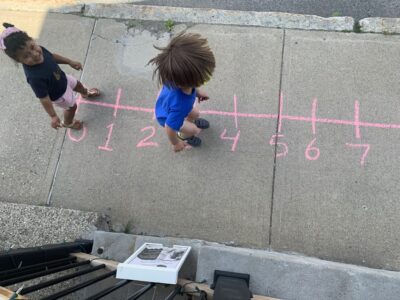
What it teaches: Number sense, mental math, addition, subtraction, skip-counting, multiplication, spatial relationships, joy in math.
Ages: Toddler and up!
The gist: This math game is just plain fun! And so easy to make. Grab a piece of chalk and create a number line with your child, starting with zero. Then just let them jump, play, explore, count! For older kids, you may want to let them go beyond or below zero. Ask them: How low can you go? How high can you go? What’s fun?
The details: Find the PDF here with suggested adaptations for the 3rd grade and under crowd. For older kids, you can create a number line with both positive and negative integers.
2. Coordinate Plane Twister
What it teaches: Coordinate grids/planes, geometry, negative and positive integers, graphing, joy in math.
Ages: 3rd grade(ish) and up (though don’t discount that a younger child couldn’t understand graphing coordinate points!).
The gist: Create a coordinate plane with paint and an old shower curtain for a more-forgiving grass-play game, or with chalk on the sidewalk. Players roll 2 dice and then put one appendage on a correlated spot on the coordinate grid. The next player then goes, alternating turns, until there is a big tangled, mathy mess of a math game!
The details: Find the PDF with directions for grown-ups here.
3. Coordinate Plane Battleship
What it teaches: Coordinate grids/planes, geometry, negative and positive integers, math joy.
Ages: 3rd grade(ish) and up
The gist: Each player has a coordinate plane in front of them, hidden from the other player. Perhaps a trampoline or a car can hide the players’ boards! Find objects to be your boats (we used cones). Place cones on the coordinate plane and take turns firing “shots” to sink the other player’s boats. The last one with a boat still “floating” wins this math game!
The details: Find the PDF with directions for grown-ups here.
4. Frisbee Math
What it teaches: Addition, subtraction, multiplication, division, positive and negative integers, number sense, number recognition, math joy
Ages: Toddlers on up
The gist: Take an old frisbee and a permanent marker. Write numbers around the edge of the frisbee. Throw the frisbee to your partner and encourage them to catch it with two hands (or one hand then place the other hand on it). The catcher then must find the sum, product, difference, or quotient of the numbers that each hand is touching. For younger kids, a simpler math game could be to identify the number their hand is touching and then finding a group of objects that represents that number.
The details: There are so many variations of this game and ways to make it simple or more complex. Find the PDF here with directions for grown-ups.
5. Equation Creation Bowling
What it teaches: Mathematical thinking, mathematical reasoning, applying arithmetic to algebraic equations, problem-solving, and strategy
Ages: 2nd grade on up (but who says a first grader couldn’t give it a try and conquer this!).
The gist: It’s bowling with either 2-liter bottles or empty aluminum cans as the pins. Use index cards to write and place numbers on the pins. Set up a challenge prior to bowling: Who can create the largest number? The smallest number? Get the closest to zero? Then you try to complete the challenge by creating an equation with the numbers that you have knocked over while bowling.
The details: Find the PDF here with directions for grown-ups.
6. Product Water Squirt
Ages: Toddlers+
What it teaches: Addition, subtraction, number recognition, multiplication, division, mathematical reasoning
The gist: Use empty toilet paper tubes or empty aluminum cans. Place numbers on each and put them in a line. Grab a water squirter and take aim! Find the sum, difference, product, or quotient of the tubes you knock over.
2 player variation: Be the first player to reach … (number). Take turns knocking down targets until the goal is reached!
The details: Find the PDF here.
7. Place Value Toss
What it teaches: addition, place value, building number sense
The gist: Love cornhole? Then you’ll love place value toss, its mathy cousin!
Grab some old pie tins, cardboard boxes, paper bags, or plastic cups. Anything you could toss a ping pong ball in! Place an index card or write on each a certain place value. Toss balls into each! Add up the total at the end (whiteboards, sidewalk chalk, or paper may help).
Don’t have ping pong balls? You can use small rocks too!
The details: Find the PDF here.
.
Looking for more resources for your kids?
Check out:
- These outdoor math activities
- This list of teacher-recommended math games
- These directions to create your own math walk.
We also can match you to the perfect tutor for your child. Find out more here.
Pictures courtesy of Jessica Carey and Megan Allen. Special thanks to Jay Bright, Community Classroom tutor, for her contributions to this post!

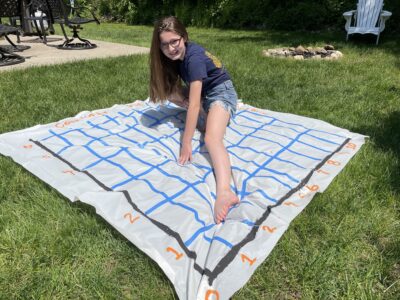
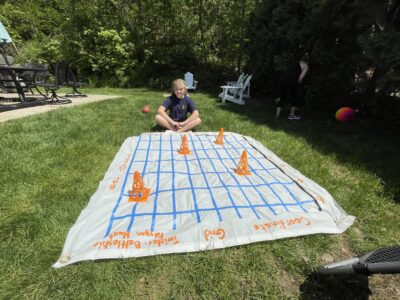
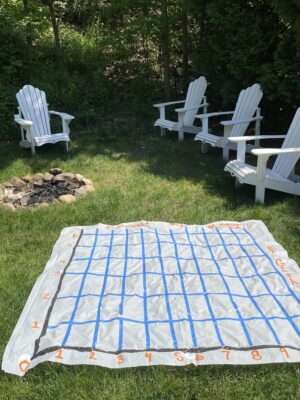
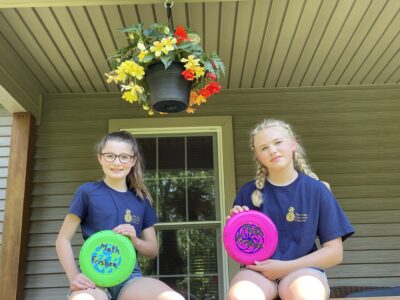

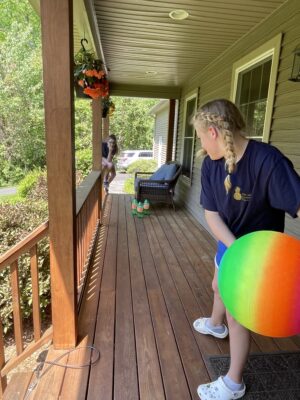
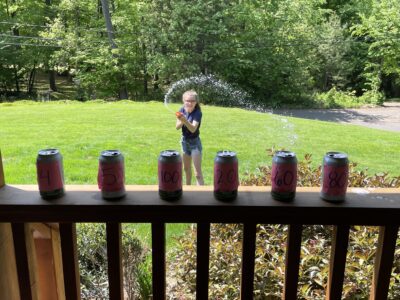

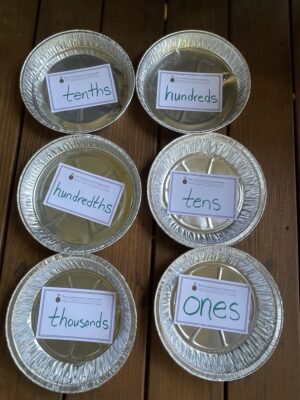
0 Comments